pilot
 Since people began moving around the world there was a need for mail service, but people hated to wait months to hear from their loved ones…especially if it was with bad news. There had to be a way to get he mail faster and with the invention of the airplane, in late 1903, the possibility of a new way to deliver the mail was on the horizon. It really didn’t take very long for someone to make the metal leap from driving the mail to flying the mail from place to place. Where there is a need, there must be a solution. That solution came on May 15, 1918, when the United States officially established airmail service between New York and Washington DC, using Army aircraft and pilots. Prior to this date, the Post Office Department used new transportation systems such as railroads or steamboats to transport mail. They contracted with the owners of the lines to carry the mail. There were no commercial airlines to contract with, so no one had thought about that yet, but that was about to change.
Since people began moving around the world there was a need for mail service, but people hated to wait months to hear from their loved ones…especially if it was with bad news. There had to be a way to get he mail faster and with the invention of the airplane, in late 1903, the possibility of a new way to deliver the mail was on the horizon. It really didn’t take very long for someone to make the metal leap from driving the mail to flying the mail from place to place. Where there is a need, there must be a solution. That solution came on May 15, 1918, when the United States officially established airmail service between New York and Washington DC, using Army aircraft and pilots. Prior to this date, the Post Office Department used new transportation systems such as railroads or steamboats to transport mail. They contracted with the owners of the lines to carry the mail. There were no commercial airlines to contract with, so no one had thought about that yet, but that was about to change.
Army Major Reuben H. Fleet was charged with setting up the first US airmail service, scheduled to operate beginning May 15, 1918 between Washington DC, Philadelphia, Pennsylvania, and New York City. The army pilots chosen to fly that day were Lieutenants Howard Culver, Torrey Webb, Walter Miller and Stephen Bonsal, all chosen by Major Fleet, and Lieutenants James Edgerton and George Boyle, both chosen by postal officials. Edgerton and Boyle had only recently graduated from the flight school at Ellington Field, Texas and neither had more than 60 hours of piloting time. While I’m sure they were a bit nervous, I’m also sure they were excited to be standing on the threshold of history.
The project got off to a bit of an embarrassingly rocky start, when Lieutenant Boyle, who was engaged to the daughter of Interstate Commerce Commissioner Charles McChord, was selected to pilot the first plane out of Washington DC that day. After all his preparations, Boyle hopped into his plane and was unable to start it. The plane had not been fueled. I’m sure that added a bit of nervousness to the situation. Nevertheless, he finally got his Curtiss Jenny, loaded with 124 pounds of airmail, into the air and made his way to Washington DC. His assignment was to fly to Philadelphia, the mid-way stop between the Washington and New York ends of the service. He did not make it there that day. The novice pilot got lost and low on gas, crash landed in rural Maryland, less than 25 miles away from Washington.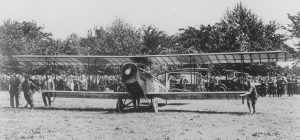
Fortunately for the service, the other flights operated as scheduled that day. Thanks to his political connections, Lieutenant Boyle was given a second chance to fly the airmail out of Washington DC. This time, he was given an escort who flew him out of the city, having given him directions to “follow the Chesapeake Bay” towards Philadelphia. Unfortunately, Boyle followed those instructions too literally, following the curve of the bay over to Maryland’s eastern shore, where he landed, out of fuel again. Not even Boyle’s connections could help him now, and he was removed from the pilots list for the service. I’m sure that didn’t help his standing with his future father-in-law either.
The other rookie pilot, Lieutenant James Edgerton, did much better on his flights and stayed with the service. Edgerton managed to keep his plane aloft during a violent storm that struck while he was on another flight, even as the propeller was pelted by hail. He stayed with the mail service until the next year, and became the Chief of Flying Operations. Then in August, the Post Office Department took over airmail operations with airplanes and civilian pilots of its own. Captain Benjamin Lipsner was named the first superintendent of the U.S. Airmail Service.
The first flight operated by the Post Office Department took off from College Park, Maryland, on August 12, 1918. The destination was New York. Max Miller flew that historic flight. Miller flew the new Curtiss R-4 aircraft. These new planes had more powerful Liberty 400 horsepower engines. Miller was the first pilot hired by the Post Office Department. He died when his plane caught fire and crashed on September 1, 1920. The Post Office Department decided to launch pathfinding flights from New York to Chicago in September 1918. A major obstacle was the Allegheny Mountains, considered by some to be the most dangerous territory on the route. U.S. Airmail Service Superintendent Benjamin Lipsner chose two of his best pilots, Eddie Gardner and Max Miller, for these flights. Eager competitors, Gardner and Miller turned the test into a race. On September 5,  1918, the pair left New York. Miller flew in a Standard airmail plane with a 150-horsepower Hispano-Suiza engine. Gardner followed in a Curtiss R-4 with a 400-horsepower Liberty engine and was accompanied by Eddie Radel, a mechanic. As each pilot landed to refuel or make repairs, he eagerly called Lipsner in Chicago to find out where the other one was. A set of telegrams now in the National Postal Museum tracked their progress. Miller landed in Chicago first, at 6:55 p.m. on September 6. Gardner arrived the next morning, landing at 8:17 at Grant Park. Sometimes it isn’t about the size of the engine I guess. Of course, today, very few people use the postal service, not called “snail mail.” With the internet and texting we have almost instant access to our loved ones.
1918, the pair left New York. Miller flew in a Standard airmail plane with a 150-horsepower Hispano-Suiza engine. Gardner followed in a Curtiss R-4 with a 400-horsepower Liberty engine and was accompanied by Eddie Radel, a mechanic. As each pilot landed to refuel or make repairs, he eagerly called Lipsner in Chicago to find out where the other one was. A set of telegrams now in the National Postal Museum tracked their progress. Miller landed in Chicago first, at 6:55 p.m. on September 6. Gardner arrived the next morning, landing at 8:17 at Grant Park. Sometimes it isn’t about the size of the engine I guess. Of course, today, very few people use the postal service, not called “snail mail.” With the internet and texting we have almost instant access to our loved ones.
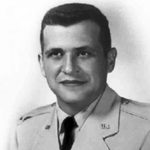
 On May 1, 1960, CIA U-2 spy plane pilot, Gary Powers found himself in a lot of trouble. His plane was disabled after being hit by Soviet surface-to-air missiles. Powers had to let his plane fall from 70,000 feet to 30,000 feet before he could release himself and bail out of the damaged cockpit. It was 1960…and the Cold War was heating up. Powers was captured, and would remain a prisoner of war until a prisoner exchange on February 10, 1962. The United States now needed a plane that was safer for these men to fly. Something that went higher and faster than any other plane, and had a minimal radar cross section. It was imperative to have such an innovative aircraft so the United States could improve intelligence gathering. Enter Lockheed’s advanced development group, the Skunk Works® in Burbank. This team had already begun work on such an aircraft.
On May 1, 1960, CIA U-2 spy plane pilot, Gary Powers found himself in a lot of trouble. His plane was disabled after being hit by Soviet surface-to-air missiles. Powers had to let his plane fall from 70,000 feet to 30,000 feet before he could release himself and bail out of the damaged cockpit. It was 1960…and the Cold War was heating up. Powers was captured, and would remain a prisoner of war until a prisoner exchange on February 10, 1962. The United States now needed a plane that was safer for these men to fly. Something that went higher and faster than any other plane, and had a minimal radar cross section. It was imperative to have such an innovative aircraft so the United States could improve intelligence gathering. Enter Lockheed’s advanced development group, the Skunk Works® in Burbank. This team had already begun work on such an aircraft.
President Dwight D Eisenhower was very impressed with the U-2’s airborne reconnaissance during these tense Cold War times, but with the need for better protection for the pilots, Eisenhower’s request went out to Lockheed to build the impossible…an aircraft that can’t be shot down…and do it fast. American aerospace engineer Clarence “Kelly” Johnson was one of the preeminent aircraft designers of the twentieth century. He and his Skunk Works team had a track record of delivering impossible technologies on incredibly short, strategically critical deadlines. Still, everything for this project had to be invented. The group was known for its unfailing sense of duty, its creativity in the face of a technological challenge and its undaunted perseverance. Be that as it may, this new aircraft was in a different category from anything that had come before. This would be the toughest assignment Skunk Works had ever been assigned…at least up to that date. They needed to have the previously unheard of type of aircraft flying in a mere twenty months.
The Lockheed SR-71 “Blackbird” was that long-range, Mach 3+ strategic reconnaissance aircraft, and was operated by the United States Air Force. It was developed as a top secret black project by the Lockheed company. During aerial reconnaissance missions, the SR-71 operated at high speeds and altitudes to allow it to outrace threats. If a surface-to-air missile launch was detected, the standard evasive action was simply to accelerate and outfly the missile. The SR-71 was designed with a reduced radar cross-section, making it harder to spot. The SR-71 served with the U.S. Air Force from 1964 to 1998. A total of 32 aircraft were built. Twelve were lost 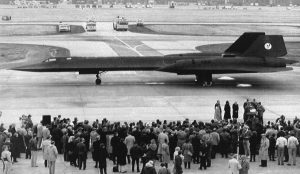
 in accidents, but none of them to enemy action. The SR-71 has been given several nicknames, including Blackbird and Habu. It has held the world record for the fastest air-breathing manned aircraft since 1976. This record was previously held by the related Lockheed YF-12. On October 9, 1999, the Lockheed SR-71 took it’s final flight, and what a flight it was!! In it’s amazing final flight, the SR-71 Blackbird flew coast to coast in just one hour.
in accidents, but none of them to enemy action. The SR-71 has been given several nicknames, including Blackbird and Habu. It has held the world record for the fastest air-breathing manned aircraft since 1976. This record was previously held by the related Lockheed YF-12. On October 9, 1999, the Lockheed SR-71 took it’s final flight, and what a flight it was!! In it’s amazing final flight, the SR-71 Blackbird flew coast to coast in just one hour.

 I was a little girl of three in 1959, when the Barbie doll came out. Every little girl old enough to understand what these dolls were, wanted one…me included. There was one little problem. I just couldn’t seem to get the name right. I told my parents that I wanted a Bride doll. In fact I think I told them that every day for the three months before the arrival of Christmas. Advertisements for the Barbie doll did nothing to deter my quest for a Bride doll. I just didn’t understand that there was going to be a problem.
I was a little girl of three in 1959, when the Barbie doll came out. Every little girl old enough to understand what these dolls were, wanted one…me included. There was one little problem. I just couldn’t seem to get the name right. I told my parents that I wanted a Bride doll. In fact I think I told them that every day for the three months before the arrival of Christmas. Advertisements for the Barbie doll did nothing to deter my quest for a Bride doll. I just didn’t understand that there was going to be a problem.
The Barbie doll made its first appearance on this day, March 9, 1959 at the American Toy Fair in New York City…just like any other supermodel, I suppose. The doll was just stunning, and over the years has been at the center of the self esteem controversy, because some people felt like she gave girls a misguided view of what their bodies should look like. I suppose the doll could have done that, but it certainly did not affect her popularity. In retrospect, I don’t recall that I ever once looked at the doll and decided that I was fat. It was a doll after all, but somewhere along the way, someone must have, so the controversy continues to this day. 
At eleven inches tall, Barbie had beautiful blond hair. Barbie was the first mass-produced toy doll in the United States with adult features. It makes sense. A baby doll can’t play the part of the mom, so if girls were to continue to play with dolls, they had to have a mom…reasoned Ruth Handler, who came up with the idea. Ruth co-founded Mattel, Inc with her husband in 1945. She saw that her young daughter, Barbara ignore her baby dolls to play make-believe with paper dolls of adult women, and realized there was a niche in the market for a toy that allowed little girls to imagine the future. The line has grown to include Ken, Midge, and Skipper.
Over the years, Barbie generated huge sales. On the positive side, many women saw Barbie as providing an 
 alternative to traditional 1950s gender roles. She has had a series of different jobs, from airline stewardess, doctor, pilot and astronaut to Olympic athlete and even United States presidential candidate. Despite the criticism, sales of Barbie-related merchandise continued to soar. The line topped 1 billion dollars annually by 1993. Since 1959, more than 800 million dolls in the Barbie family have been sold around the world and Barbie is now a bona fide global icon. Eventually, I did get my Barbie doll, and for some reason, I never told my parents about the mix-up. I guess I couldn’t let them think that my Christmas gift had not been what I wanted. Besides that, the Bride doll was very beautiful, although I never played with it as much as I would have played with the Barbie doll.
alternative to traditional 1950s gender roles. She has had a series of different jobs, from airline stewardess, doctor, pilot and astronaut to Olympic athlete and even United States presidential candidate. Despite the criticism, sales of Barbie-related merchandise continued to soar. The line topped 1 billion dollars annually by 1993. Since 1959, more than 800 million dolls in the Barbie family have been sold around the world and Barbie is now a bona fide global icon. Eventually, I did get my Barbie doll, and for some reason, I never told my parents about the mix-up. I guess I couldn’t let them think that my Christmas gift had not been what I wanted. Besides that, the Bride doll was very beautiful, although I never played with it as much as I would have played with the Barbie doll.
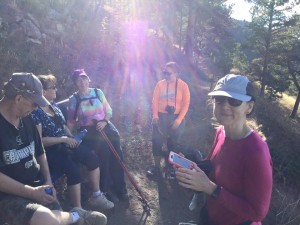 For most of my life, I can say that I had never broken a bone. but on October 18, 2015, all that changed. As my associates, Jim Stengel and Carrie Beauchamp said, I have now “joined the Broken Bone Club” and that the only membership dues was to have broken a bone somewhere in the body. I didn’t really ever want to join this club to be honest. I think they view me as an overachiever though, because as everyone has told me, I did a bang up job on my shoulder. I was on a simple hike on Casper Mountain’s Bridle Trail to celebrate the victorious journey to health of my sister-in-law, Brenda Schulenberg, who had become ill two years to the day, and had gone on to make an amazing recovery. I suppose that it is true that I did a bang up job on my shoulder, in that you almost never see a break like this one, unless it was a bad car accident, or a bad fall. The fall itself wasn’t that bad, but the bone did break on impact. It was the twisting movement that happened after the break that caused the ball of my shoulder joint to twist a quarter turn in the socket, thus requiring surgery, including a plate and nine screws, to be necessary to make the repairs. That surgery was a week ago, and I have learned so much in that one very long week.
For most of my life, I can say that I had never broken a bone. but on October 18, 2015, all that changed. As my associates, Jim Stengel and Carrie Beauchamp said, I have now “joined the Broken Bone Club” and that the only membership dues was to have broken a bone somewhere in the body. I didn’t really ever want to join this club to be honest. I think they view me as an overachiever though, because as everyone has told me, I did a bang up job on my shoulder. I was on a simple hike on Casper Mountain’s Bridle Trail to celebrate the victorious journey to health of my sister-in-law, Brenda Schulenberg, who had become ill two years to the day, and had gone on to make an amazing recovery. I suppose that it is true that I did a bang up job on my shoulder, in that you almost never see a break like this one, unless it was a bad car accident, or a bad fall. The fall itself wasn’t that bad, but the bone did break on impact. It was the twisting movement that happened after the break that caused the ball of my shoulder joint to twist a quarter turn in the socket, thus requiring surgery, including a plate and nine screws, to be necessary to make the repairs. That surgery was a week ago, and I have learned so much in that one very long week.
It has been just ten days since my life was turned upside down, and I went from being a caregiver to a care  receiver. What a shock to my system that was. My mind does not really like the concept of needing help with my daily needs. Nevertheless, that has become the case. I am very thankful to the group of experienced people I had with me at the time of my fall. My sister-in-law, Jennifer Parmely is a nurse, and a friend of my sister-in-law, Brenda Schulenberg, Laura Murray is a physical therapist, The two of them immediately set about making a sling out of a Laura’s dog’s leash and Jennifer’s handkerchief. Jennifer’s boyfriend, Brian Cratty is an prior life flight pilot, and my husband, Bob Schulenberg and sister-in-law, Brenda are experienced caregivers. As I was laying on the ground trying to control the feeling of needing to pass out, two CNAs, who’s names I do not know, unfortunately, came up behind us and helped get me to my feet, and fashion a gait belt for me out of a sweatshirt, so I could walk the last three quarters of a mile to finish the hike and go to the hospital. I could not have asked for a better group of people to have with me…if I just had to break my shoulder.
receiver. What a shock to my system that was. My mind does not really like the concept of needing help with my daily needs. Nevertheless, that has become the case. I am very thankful to the group of experienced people I had with me at the time of my fall. My sister-in-law, Jennifer Parmely is a nurse, and a friend of my sister-in-law, Brenda Schulenberg, Laura Murray is a physical therapist, The two of them immediately set about making a sling out of a Laura’s dog’s leash and Jennifer’s handkerchief. Jennifer’s boyfriend, Brian Cratty is an prior life flight pilot, and my husband, Bob Schulenberg and sister-in-law, Brenda are experienced caregivers. As I was laying on the ground trying to control the feeling of needing to pass out, two CNAs, who’s names I do not know, unfortunately, came up behind us and helped get me to my feet, and fashion a gait belt for me out of a sweatshirt, so I could walk the last three quarters of a mile to finish the hike and go to the hospital. I could not have asked for a better group of people to have with me…if I just had to break my shoulder.
While that group was amazing, and I owe then more than I can ever repay, it has been something within my self that I have found to be equally amazing, since my fall. It is the power I have in my right arm…the power of one, as I call it. People do not think about how many things take the use of both arms to do. When you are down to one arm, you find out just how strong…or weak it is. Thankfully for me, it was my non-dominate arm that suffered the break. My power of one level would have been far less successful had it been my dominate arm that suffered the break. Still, my right arm, which is the dominate arm, did have to be retrained. There  were things that I simply could not do without assistance at first, but in my minds refusal to truly be a care receiver, I continued to think of ways and try to do things one handed, if I could find a way. In less than a day, I was able to put my contacts in one handed, with just the assistance of my teeth to open the container of my dailies lenses.
were things that I simply could not do without assistance at first, but in my minds refusal to truly be a care receiver, I continued to think of ways and try to do things one handed, if I could find a way. In less than a day, I was able to put my contacts in one handed, with just the assistance of my teeth to open the container of my dailies lenses.
In less than a week I could dress myself, including jeans, for which I fashioned a way to button them with a ribbon and minimal help from my left hand. I figured our ways to get my shoes and socks on one handed too. I did makeup one handed and brushed my hair one handed. I typed my stories one handed, and even lifted my laptop onto my lap one handed. While there were a number of things I couldn’t do one handed, I must say, I’m surprised at the things I could. We don’t often think about how important it is to have both hands to perform our daily tasks, until we don’t have both hands. Having the use of just one arm is a set back to be sure, and a serious inconvenience, but after spending the last ten days in just that predicament, I can also say that I am very much amazed at the power of my one arm.
 As a writer, I don’t usually have very much time for reading. Yesterday, however, on a long drive with my mom and sister, Cheryl, heading to Wisconsin to visit our family out there, I found myself with a few minutes to read. Since being in contact with Jerry Schemmel, who is a survivor and hero of the United Flight 232 crash in Sioux City, Iowa, I have been thinking a lot about the plane crash that took my Great Aunt Gladys’ life. Jerry wrote a book about his experience, and I have purchased that, but while waiting for that book, I had started another book about that flight, and the miracle that it really was. There is much that we really had no idea about when that crash took place 25 years ago July 19th. For one thing, the DC-10 should not be able to fly…at all…with the hydraulics gone, and yet that crew managed to keep that plane in the air for an astonishing 45 minutes after losing the number two engine and all of their hydraulics.
As a writer, I don’t usually have very much time for reading. Yesterday, however, on a long drive with my mom and sister, Cheryl, heading to Wisconsin to visit our family out there, I found myself with a few minutes to read. Since being in contact with Jerry Schemmel, who is a survivor and hero of the United Flight 232 crash in Sioux City, Iowa, I have been thinking a lot about the plane crash that took my Great Aunt Gladys’ life. Jerry wrote a book about his experience, and I have purchased that, but while waiting for that book, I had started another book about that flight, and the miracle that it really was. There is much that we really had no idea about when that crash took place 25 years ago July 19th. For one thing, the DC-10 should not be able to fly…at all…with the hydraulics gone, and yet that crew managed to keep that plane in the air for an astonishing 45 minutes after losing the number two engine and all of their hydraulics.
That situation…total loss of hydraulics should have immediately thrown the plane into a rollover situation…meaning that it should have rolled onto its back. The events that would have followed should have been a fast spiral downward, causing the wings and tail to break off of the plane. The plane should have then gone barreling into the ground like a rocket, resulting in the instant death of all persons on board. The fact that none of the things that should have happened…did happen, caused all those who were trying to help the plane to assume that the pilots has misdiagnosed the problem that the plane had. Some even assumed that they could land in Chicago, Illinois, instead of Sioux City, Iowa. I’m sure that to the crew, this all seemed incredible. The people helping them should have known that they knew how to  read their instruments, and they did, but what they were saying was impossible…totally impossible. Nevertheless, it was happening, and the pilots were flying it…against all odds…against the impossible. They even called the people at United Airlines Systems Aircraft Maintenance, also known as SAM to see if they could help. They thought the pilots had misdiagnosed the problem too, until they confirmed that the hydraulic fluid had all leaked out. The people at SAM said later that they had no idea what to say to the crew, because they felt like they were talking to four dead men. They didn’t believe anyone could survive it.
read their instruments, and they did, but what they were saying was impossible…totally impossible. Nevertheless, it was happening, and the pilots were flying it…against all odds…against the impossible. They even called the people at United Airlines Systems Aircraft Maintenance, also known as SAM to see if they could help. They thought the pilots had misdiagnosed the problem too, until they confirmed that the hydraulic fluid had all leaked out. The people at SAM said later that they had no idea what to say to the crew, because they felt like they were talking to four dead men. They didn’t believe anyone could survive it.
There was no procedure for a full loss of hydraulics. Flight simulators didn’t teach that scenario, because it was not considered survivable. It had never happened…and if it had, no one survived, because this was not a survivable event…at least it wasn’t until that day. This pilot and co-pilot were flying by the seat of their pants, and the normal fixes wouldn’t work. Captain Al Haynes simply moved on instinct when he used the throttles. He thought he had seen something in the manual about it, but I’m not sure it was there, because it was not supposed work. He was basically using power to control the plane. The plane wanted to turn over, and so, using asymmetric thrust, he was able to keep it making wide loops, and finally ended up at the airport. It would also take the help of a fourth person to make this work. Thankfully they had DC-10 instructor, Dennis Fitch on board to handle the extra need. Each loop caused them to lose altitude, and so at one point they didn’t think they would make the airport. In the end, they had to use a runway that had not been used or maintained in a year. That did not contribute to the crash, however.
I have watched the crash video many times, and you can see that the crew…and I do say the crew, because it took all three of them, and the instructor to run all 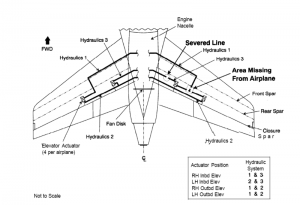 the controls that it took to maneuver the plane…almost landed the plane safely. They were so close. Then the plane tried one more time to roll over, causing the right wing to tap the ground. That was all it took to cartwheel the plane down the runway. In watching that crash, I have no idea how anyone survived it at all…much less more than half of the occupants, including all of the crew. It was a miracle of God, and an answer to the many prayers that were being prayed on board that day. I wish Aunt Gladys had survived, but that was not to be. Nevertheless, there were many heroes that day, and the crew who flew that plane were definitely the greatest.
the controls that it took to maneuver the plane…almost landed the plane safely. They were so close. Then the plane tried one more time to roll over, causing the right wing to tap the ground. That was all it took to cartwheel the plane down the runway. In watching that crash, I have no idea how anyone survived it at all…much less more than half of the occupants, including all of the crew. It was a miracle of God, and an answer to the many prayers that were being prayed on board that day. I wish Aunt Gladys had survived, but that was not to be. Nevertheless, there were many heroes that day, and the crew who flew that plane were definitely the greatest.
 They say that girls often marry a man who is much like their dad, and that seems to be the case with Jessi and Jason. Both Jessie’s dad, and Jason are police officers, but that is only one of the similarities between these two men. They are both serious pranksters, which Jessi tells me reminds her a lot of her dad and her grandpa, my dad. Of course, it is apparently pretty easy to tease Jessi, because she is pretty gullible and believes anything Jason says. For that reason, he never misses an opportunity to try to trick her. I would imagine life in their house is pretty comical.
They say that girls often marry a man who is much like their dad, and that seems to be the case with Jessi and Jason. Both Jessie’s dad, and Jason are police officers, but that is only one of the similarities between these two men. They are both serious pranksters, which Jessi tells me reminds her a lot of her dad and her grandpa, my dad. Of course, it is apparently pretty easy to tease Jessi, because she is pretty gullible and believes anything Jason says. For that reason, he never misses an opportunity to try to trick her. I would imagine life in their house is pretty comical.
Another way Jason is like my dad, Jessi’s grandpa, is that when it comes to cars, foreign is simply not an option. Of course, there are several people like that in our family. Most of us really believe that it is best to buy American, and that is Jason’s thought too, but there is another reason for him too. Jason was born in Michigan…just 20 minutes from Detroit. I doubt that someone could be born and raised in that area and not know the importance of buying American made cars.
There are many sides to Jason. He has degrees in engineering and fire science, and also has his pilot’s license; and yet he knew that his true calling was to be a Highway Patrolman. He loves what he does, and of course there is more to being a police officer  than giving tickets. Jason is the lead Crash Team member in our area, and my kids can attest to the value of that. He was the first one on scene at an accident involving my son-in-law Kevin’s dad. It was such a relief to Kevin and Corrie to have Jason meet them at the edge of the scene and tell them that his dad was ok. He was caring and yet thoroughly did his job on the accident. That is how he handles every accident he deals with…with compassion and professionalism. As Jessi says, “God definitely has special people in mind for every job and this is no exception.” I have to agree. God does place the right people in the right job, and Jason is the kind of person that you want to see after you have been in an accident.
than giving tickets. Jason is the lead Crash Team member in our area, and my kids can attest to the value of that. He was the first one on scene at an accident involving my son-in-law Kevin’s dad. It was such a relief to Kevin and Corrie to have Jason meet them at the edge of the scene and tell them that his dad was ok. He was caring and yet thoroughly did his job on the accident. That is how he handles every accident he deals with…with compassion and professionalism. As Jessi says, “God definitely has special people in mind for every job and this is no exception.” I have to agree. God does place the right people in the right job, and Jason is the kind of person that you want to see after you have been in an accident.
Jason loves kids, and there will definitely be children in the future for Jessi and Jason, but for now he likes to do things with the other kids in the family. On Labor Day weekend, when the family went up to my sister, Caryl and her husband, Mike’s cabin at Seminole Reservoir, Jason took every single kid…10 all together, for rides on the RzR. They all have an amazing time. Jason will never pass up the opportunity to share these kinds of things with a child. He has a very soft heart when it comes to kids.

Like most people, Jason has a nickname. Because of his red hair, they call him Red, Ginger, and a few others that the guys at work have stuck him with. If they tell you to call him one of those, he will probably know exactly who told you to do it. They might think they got away with something…but they didn’t. Jessi says she had no idea that being a redhead was such a big deal, and maybe that’s part of it, but I think it goes back to that sense of humor and a little return teasing, because of all the pranking Jason has done to others in his past. Today is Jason’s birthday. Happy birthday Jason!! Have a wonderful day!! We love you!!
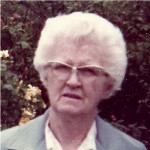 My Great Aunt Gladys, passed away on July 19, 1989. She was a passenger on United Airlines Flight 232, which crashed at Sioux Gateway Airport in Sioux City, Iowa. It was a crash I’m sure many of you will remember. According to the pilot on that flight, Captain Al Haynes a veteran pilot with 30,000 hours of flying time, “When the #2 hydraulics on the DC-10 blew, or when the #2 engine blew, it took out the #2 accessory drive section, which took out the hydraulics for the #2 system. And some 70 pieces of shrapnel penetrated the horizontal stabilizer and severed the #1 line and the #3 line, and as a result we ended up with no hydraulics.”
My Great Aunt Gladys, passed away on July 19, 1989. She was a passenger on United Airlines Flight 232, which crashed at Sioux Gateway Airport in Sioux City, Iowa. It was a crash I’m sure many of you will remember. According to the pilot on that flight, Captain Al Haynes a veteran pilot with 30,000 hours of flying time, “When the #2 hydraulics on the DC-10 blew, or when the #2 engine blew, it took out the #2 accessory drive section, which took out the hydraulics for the #2 system. And some 70 pieces of shrapnel penetrated the horizontal stabilizer and severed the #1 line and the #3 line, and as a result we ended up with no hydraulics.”
It was a situation that had a 1 in 1 billion chance of happening, but on July 19, 1989, on United Airlines Fight 232 which had taken off from Stapleton International Airport in Denver, Colorado, bound for Chicago, Illinois with 296 souls on board, one of which was my Great Aunt Gladys, it did happen. Of the 285 passengers and 11 crew members, 184 people would survive the subsequent crash of United Airlines Flight 232…sadly, my Great Aunt Gladys was not one of them. The airline was having a special that day, in which children flying with a parent flew for half price. That special put an unusually large number of children on the flight…52 to be exact. A number of those kids were traveling alone. Four children were “lap” children…children without a seat of their own. Eleven children, including 1 “lap” child died in the disaster.
The passengers on board the flight knew they were in trouble for 45 minutes before the crash. I have often thought about what my Aunt Gladys was thinking about during those 45 minutes. Her family, of course…hoping she would be able to return home to see them again. Worry and fear must have entered in, and it makes me so sad to think that her last minutes were spent in such a manner. My mom said something to me after we found out that she had not survived, that makes me think that she was thinking of one other thing…the children. Mom said that Aunt Gladys would have wanted the children to survive, because they had not had a chance at life yet. I think that is true, because Aunt Gladys was always so sweet to the children. She never said one harsh word to me or my sisters…even when we wanted to play with her Avon products or touch her silk nylons, because they were so soft.
During the crash, the plane cartwheeled, and possessions where thrown all over the  place. So came about the misinformation that made us believe that Aunt Gladys had survived. Her purse went to the hospital with another woman. Upon further investigation, they would find that it was not my aunt, but not before the news media had listed her as a survivor. It was not their fault, but nevertheless heartbreaking to our family. Today marks the 23rd anniversary of the crash of United Flight 232 in Sioux City, Iowa, and the subsequent loss of my dear Great Aunt Gladys. Sometimes, when I see a woman who resembles her, my heart still jumps, because it’s almost like she is still here. I suppose that happens because we could not view her body, and maybe that isn’t the worst thing. At least we can still imagine her among the living. We love and still miss you Aunt Gladys.
place. So came about the misinformation that made us believe that Aunt Gladys had survived. Her purse went to the hospital with another woman. Upon further investigation, they would find that it was not my aunt, but not before the news media had listed her as a survivor. It was not their fault, but nevertheless heartbreaking to our family. Today marks the 23rd anniversary of the crash of United Flight 232 in Sioux City, Iowa, and the subsequent loss of my dear Great Aunt Gladys. Sometimes, when I see a woman who resembles her, my heart still jumps, because it’s almost like she is still here. I suppose that happens because we could not view her body, and maybe that isn’t the worst thing. At least we can still imagine her among the living. We love and still miss you Aunt Gladys.

